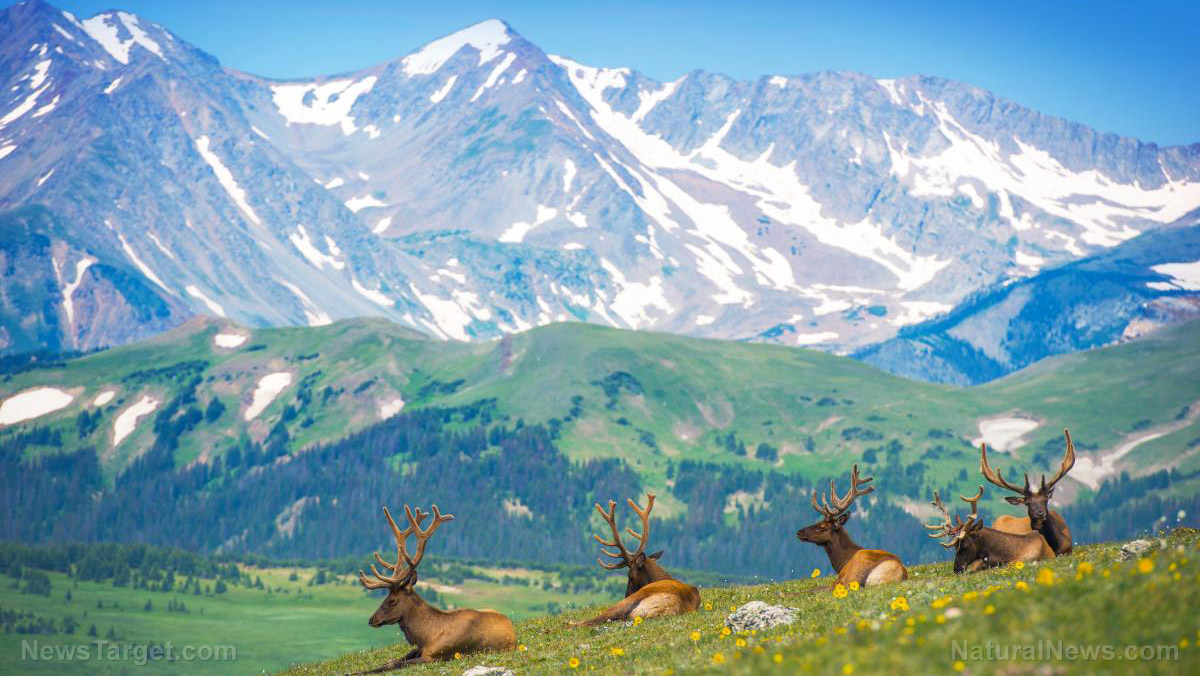Scientists turn to elk to help restore damaged strip-mined land

(Natural News) When it comes to bringing back plants and wildlife to the barren wasteland of strip mines throughout Central Appalachia, conservationists have recently tried out a different approach. They built their environmental restoration program around Rocky Mountain elk that recently returned to their old stomping grounds.
Large populations of elk used to live in the Appalachians and the other mountain ranges that connected to the Rockies. Loss of habitat and excessive hunting drove the big deer into extinction in many of its home areas.
Recent conservation programs reintroduced the Rocky Mountain elk to its former ranges. Herds now roam Virginia and the rest of Central Appalachia.
Elk prefer open terrain with low vegetation and small copses of trees. It so happens that this description fits formerly strip-mined land that once fed the region’s massive coal industry. (Related: Switching to agricultural practices that call for less plowing can benefit the environment in the long run.)
Former coal strip mines are now meadows that host Rocky Mountain elk and other animals
Earlier coal mining operations sank shafts deep into the ground to find coal seams. Modern miners use the mountaintop-removal technique – they use explosives to destroy the topmost part of a mountain and mine the revealed valuable rocks. Trees and the original topography of the area are lost.
Once they deplete the coal deposits in an area, mining companies are required to restore the area. They fill in the strip mine, spread topsoil over it, and seed it with plants that will hold the ground together.
Companies often do this as cheaply as possible to save on costs. They also tend to use non-native plants that will hold the soil together but might affect native species.
More than a million acres of the Central Appalachian mountains got flattened by destructive mountaintop-removal mining. Some of these areas became 40 percent flatter after the coal mining operations, a Duke University study found in 2016.
Several states turned the badly restored strip mines into the new homes of reintroduced Rocky Mountain elk. They hoped that the move would increase biodiversity in the areas.
Further, they believed that tourists and hunters would flock to coal country to watch the elk and other local wildlife, be it through binoculars or gun-sights. The money spent by visitors would help revive the local economy.
A keystone species that preserves the artificial meadows from getting overrun by forests
Interestingly, elk restoration achieved its beneficial effect on the former strip mines by preventing them from regrowing their old forests. While this is bad for wildlife that prefers woodland habitats, this is also good for elk and other animals that live in open spaces.
Most mining companies settle for stabilizing the ground in their closed strip mines so that the loose soil won’t run off come the next storm. They do this by filling up the gaps with graded material and seeding the topsoil layer with plant species that hold the ground together.
The soil on reclaimed strip mines tends toward compactness. Most plants cannot take root in such tightly packed dirt. The poor nutrient content and a higher risk of storm runoff don’t help.
Elk act as a keystone species that alters the habitat. The animals graze, trample, and uproot plants. They also wallow in the soil, which inflicts further damage to vegetation. Their activities ensure that the artificial meadows remain free of too many trees while also helping to create open grassland and wetland areas. These features attract birds, amphibians, and insects, and in turn, predators for them as well.
“They’re back doing the work they’re supposed to be doing in the landscape, even though it’s a denatured sort of alien landscape in some ways,” explained the University of Kentucky researcher John Cox. “These grasslands are providing habitat for grassland bird and shrub-scrub species that are declining in the U.S.”
Sources include:



